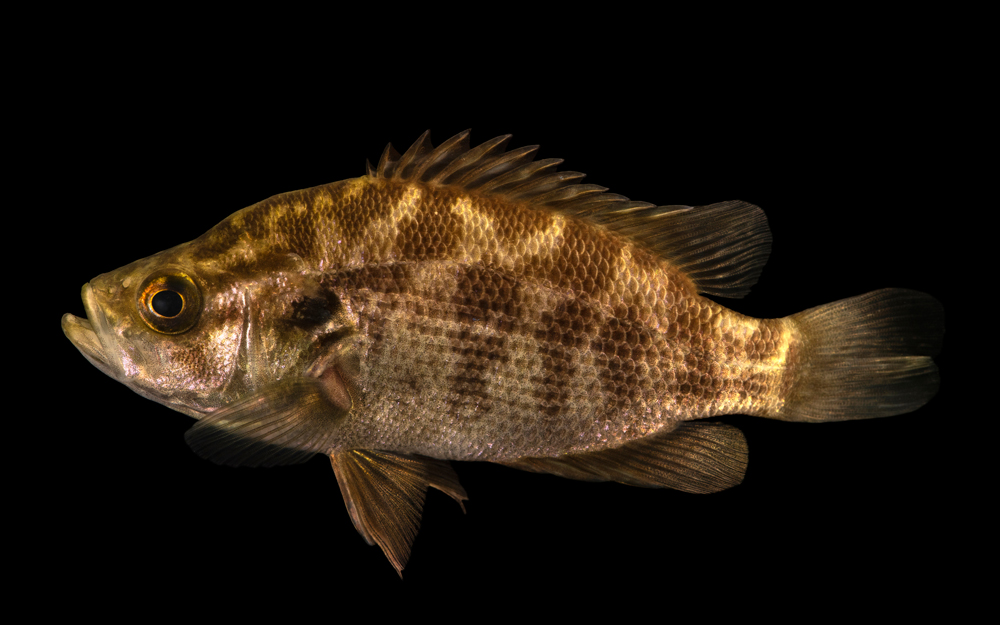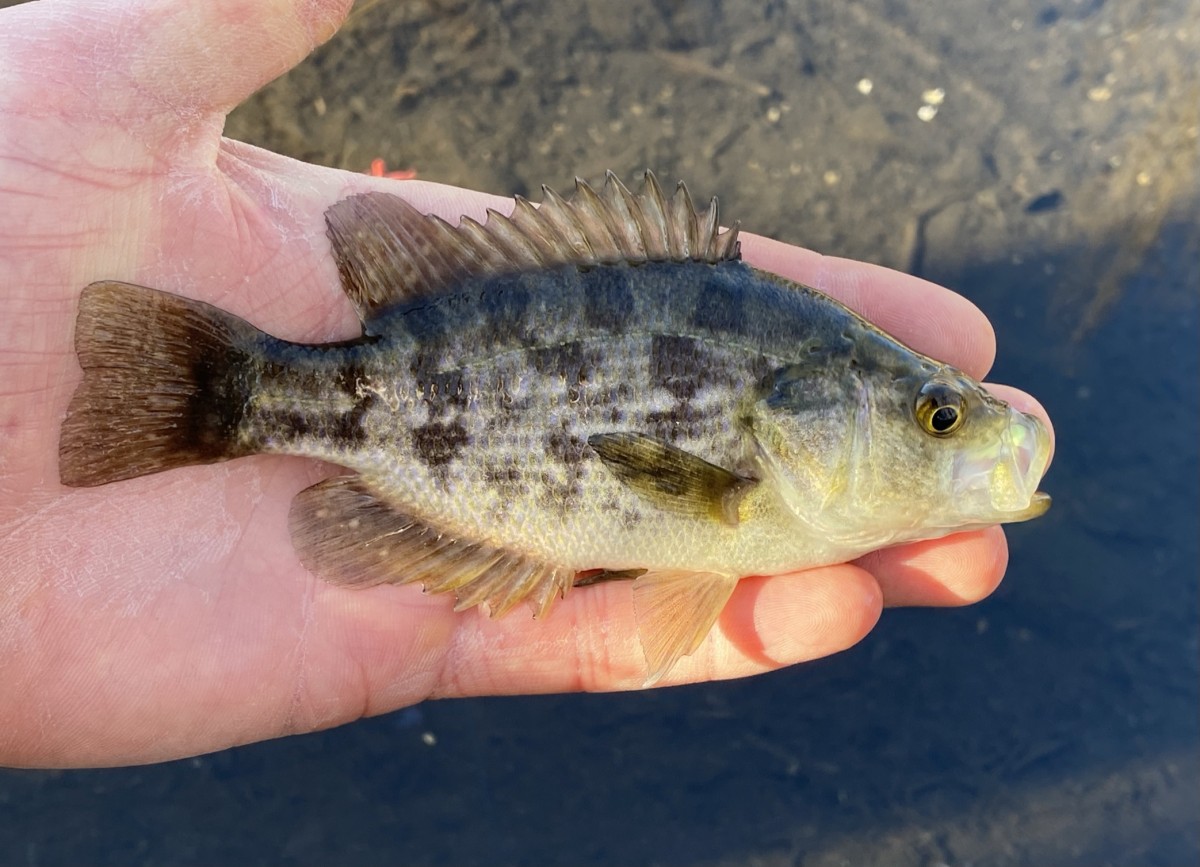Sacramento perch
(Archoplites interruptus)

Classification
General data
The Sacramento perch (Archoplites interruptus) is an endangered sunfish (family Centrarchidae) native to the Sacramento–San Joaquin River Delta, Pajaro, and Salinas River areas in California, but widely introduced throughout the western United States.
The Sacramento perch native habitat is in sluggish, heavily vegetated, waters of sloughs and lakes.
It can reach a maximum overall length of 61 cm (24 in) and a maximum weight of 3.6 kg (7.9 lb), and it has been reported to live as long as six years.
Its adaptability to different habitats is high, and it can survive on a wide variety of food sources. As young perch, they consume mainly small crustaceans and eventually move on to insect larvae and then smaller fish as adults.
Description
This species is a deep-bodied fish with long dorsal and anal fins. The mouth is large with numerous small teeth found on its jaws, tongue, and roof of its mouth. Its scales are large and brown on the sides and top of the fish and create a metallic greenish-purple shine. The Sacramento perch is most identifiable by its irregular vertical bars. Breeding males and females are slightly sexually dimorphic in color. The males become darker and have purple opercula (hard, bony flap that protects the gills). The color in females is plainer with spotted opercula. Its size is dependent on how old the fish is. A Sacramento perch at age 1 would measure 6–13 cm, at age 2 it would be 12–19 cm, and the growth rate will begin to slow. The largest of this species ever recorded was 61 cm total length.
Distribution
Historically, the Sacramento perch was found throughout the Central Valley of California at elevations below 100 m. The Sacramento perch was very popular for recreational fishing. It was so abundant that this species was commonly used as a food fish eaten regularly. It inhabited sloughs, slow-moving rivers of the Pajaro and Salinas rivers, and lakes with emergent vegetation such as Clear Lake.
This species has been eliminated from 90% of its natural habitat due to habitat destruction, egg predation by invasive fish species, and interspecific competition. Sacramento perch are quite rare now and found primarily in warm, turbid, and alkaline farm ponds, reservoirs, and recreational lakes that it has been introduced into. There are only two native populations of Sacramento perch that are still maintaining themselves and those reside in Clear Lake and Alameda Creek drainage as well as gravel pit ponds in the Calaveras Reservoir.











